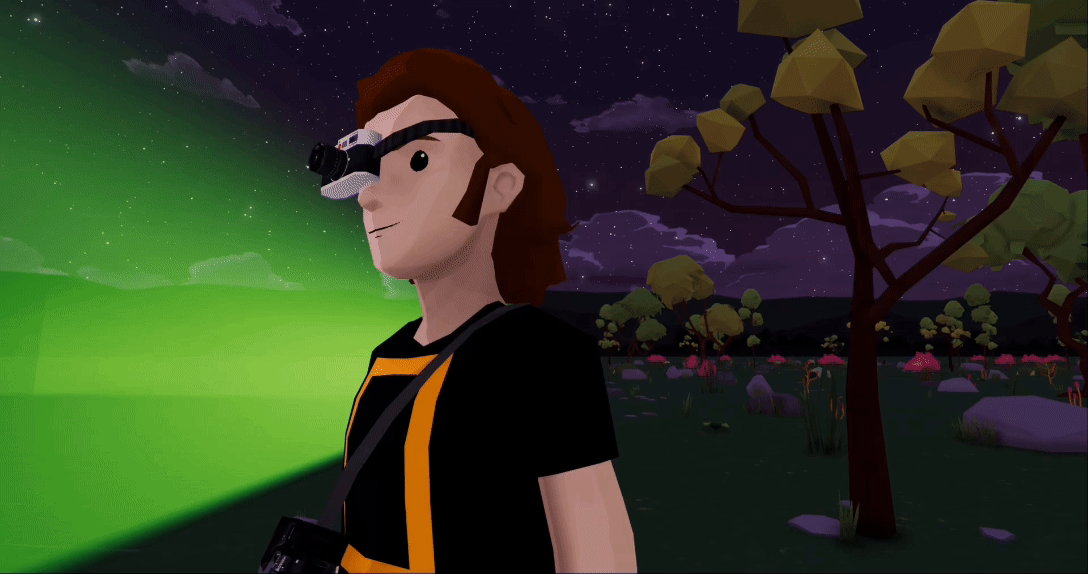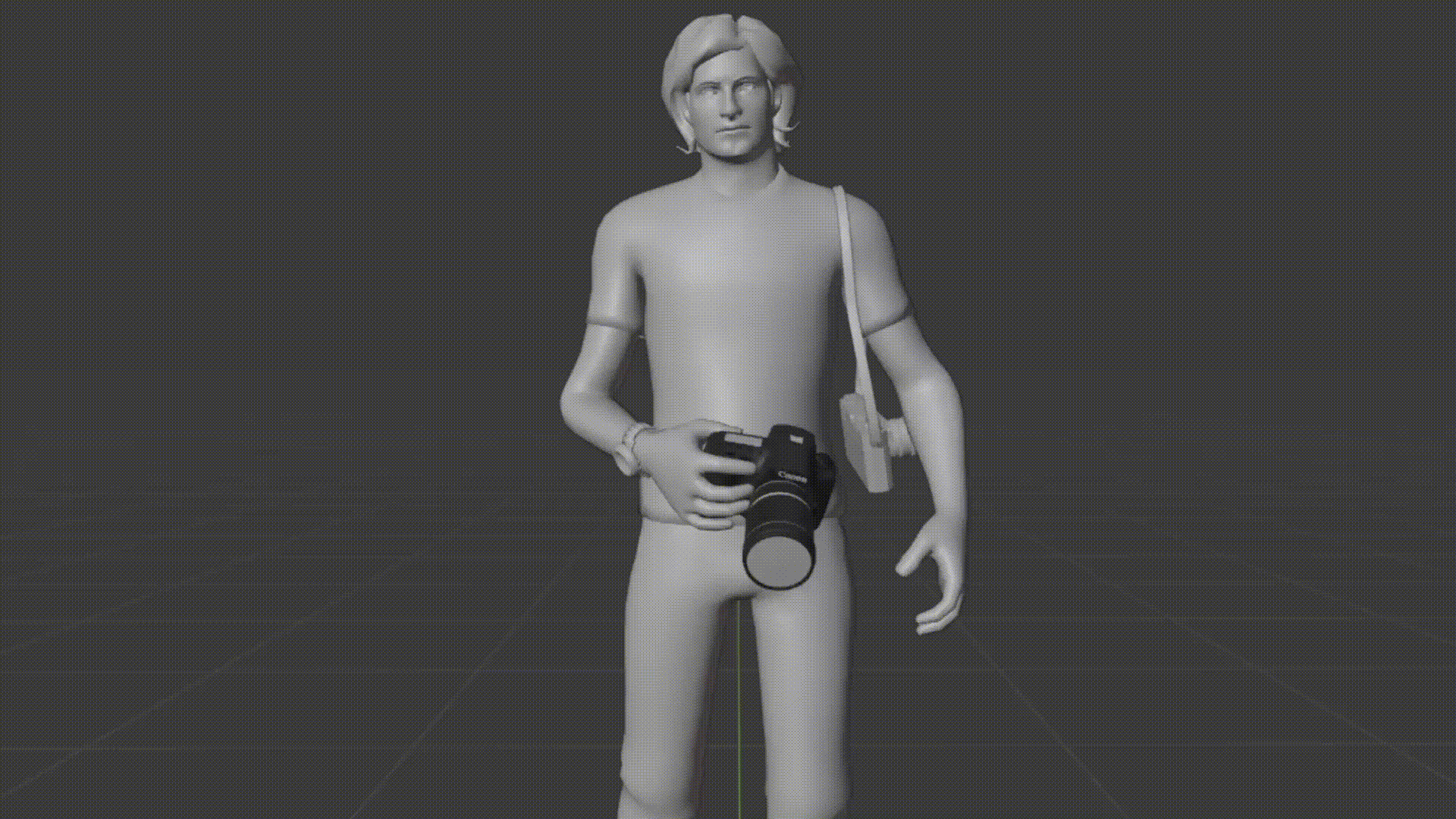
Virtual Camera, Virtual Self
(2021-2023)
This page explores the process and tools I used, beginning in the summer of 2021, as I started documenting inside the multiverse of metaverse worlds making headlines that year.
Documenting virtual worlds necessitated the creation of both photographer and camera in digital space. Across dozens of virtual environments, I developed unique avatar-camera combinations, each adapted to its world's specific constraints and possibilities. This process not only required technical problem-solving but also prompted a fundamental reevaluation of identity, embodiment, and the nature of visual documentation in digital realms.
Transmitting the essence of being a photographer into virtual spaces also required a reconsideration of the photographic act itself. In physical reality, photography is intrinsically tied to the manipulation of light, the framing of moments, and the photographer's embodied presence. In virtual realms, these core elements are simultaneously liberated from physical constraints and bound by new, code-defined limitations, with virtual suns casting digital light on very real moments. My presence and appearance, manifested through various avatars, profoundly influenced what was possible and permissible as I played my role in these new virtual forums. The act of 'seeing' as a photographer was transformed as well; in some worlds, I wielded camera tools that mimicked or even surpassed physical cameras in functionality, while in others, the very concept of a 'camera' had to be reimagined. Using screenshots or repurposed in-world objects as imaging devices forced me to reconsider what constitutes the photographic gaze, challenging me to find new ways of seeing and requiring a hyper-awareness of each virtual environment's unique visual language and spatial logic.
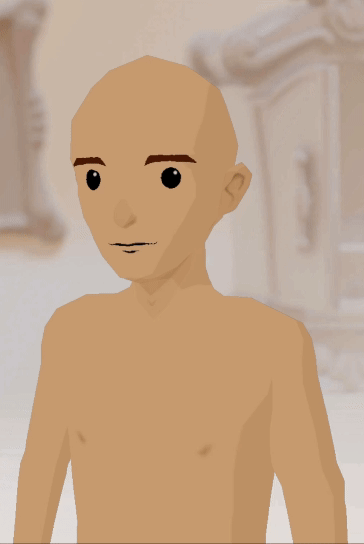







In Decentraland, the absence of traditional photographic tools necessitated some innovation as I reimagined the photographer's props, presence, and practice. The solution materialized as a custom camera eye patch—a synthesis of wearable technology and photographic tool—complemented by a meticulously crafted digital identity. Each element, from a bespoke outfit complete with a secondary camera body, to personalized hair and sideburns, down to my signature gold shoes, was minted as an individual NFT on the MANA blockchain, embodying the project's engagement with crypto-native principles. This carefully constructed persona not only circumvented technical limitations but also served as a performative aspect of the photographer's role, shaping in-world interactions. The process of creating and minting these custom items was itself a complex undertaking, necessitating collaboration with digital artists and navigation of Decentraland's marketplace mechanics. Paradoxically, despite these sophisticated preparations, the final images were captured via high-resolution screenshots on large monitors, underscoring the platform's early-stage constraints. This limitation forced creative workarounds, such as strategically positioning the avatar to frame shots and utilizing environmental elements as compositional tools.




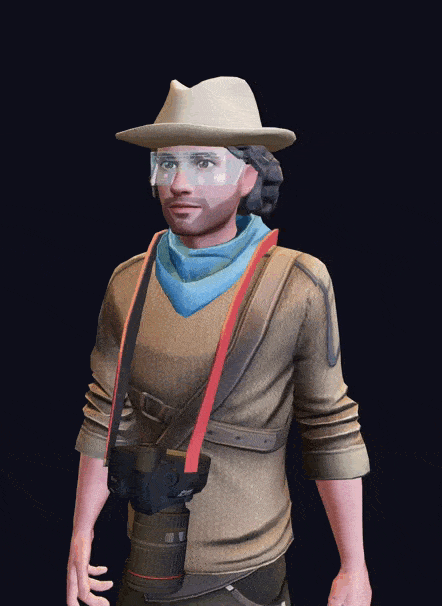
Collaboration with Ready Player Me (formerly Wolf3D) resulted in a meticulously crafted, cartoonified digital twin, created through iterative photo references and consultations. This bespoke avatar, complete with my cameras and three hat colors with attached hair, came with a caveat: I had to agree to its release for public use across over 6,000 apps and virtual worlds. My digital photographer self thus became a shared asset, accessible to users in diverse gaming environments, social VR spaces, and metaverse applications—a surrendering of personal identity into the collective digital space. This avatar found particular utility for me in Mona's blockchain-based worlds, VRChat's social VR platform, and Somnium Space's crypto-driven metaverse. In VRChat and Somnium Space, it enabled full immersion and the use of hand-held tablet cameras capable of capturing 8K resolution images. This was the embodiment that most closely mirrored my physical-world photography practice, but with added capabilities (super powers), like the ability to wade through molten lava.
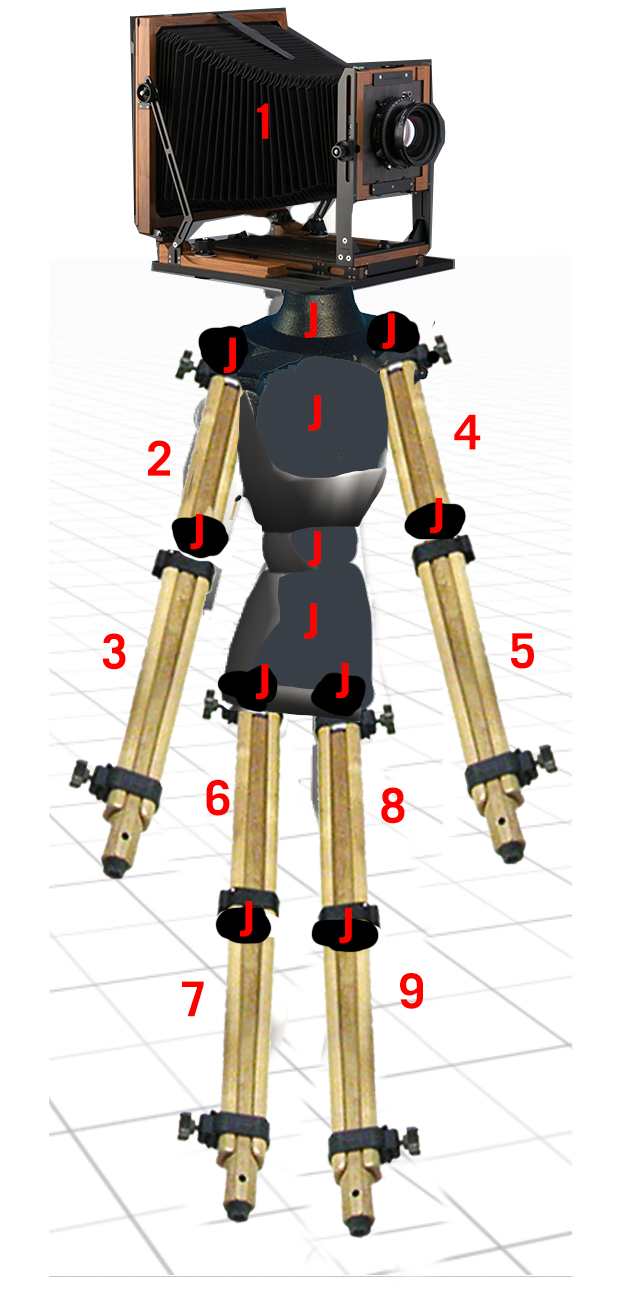


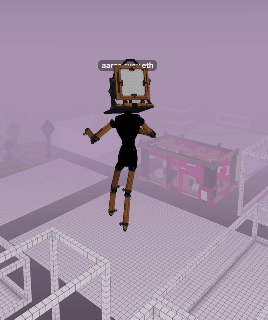

In Cryptovoxels, the platform's constraints led to the creation of perhaps the most conceptual avatar in the project. Faced with the inability to use in-game cameras or raise objects to eye level, I conceived a full-body solution: an avatar that was itself a camera. Modeled after a large format 8x10 camera, with my head as the focal point and mounted on articulated wooden tripod limbs, this design literally embodied the fusion of photographer and equipment. The creation process was as complex as the concept, requiring the minting of nine separate NFTs that were then assembled into a cohesive, functional body. This approach not only overcame the platform's technical constraints but also served as a performative statement on the nature of photography in voxel-based worlds. The camera’s ability to dance—an unexpected bonus—added a layer of humor to its otherwise serious purpose. Debuted at weekly WIP Meetups, this camera-body hybrid transcended its role as a mere tool, becoming a conceptual piece that questioned the boundaries between photographer, subject, and medium in digital spaces.

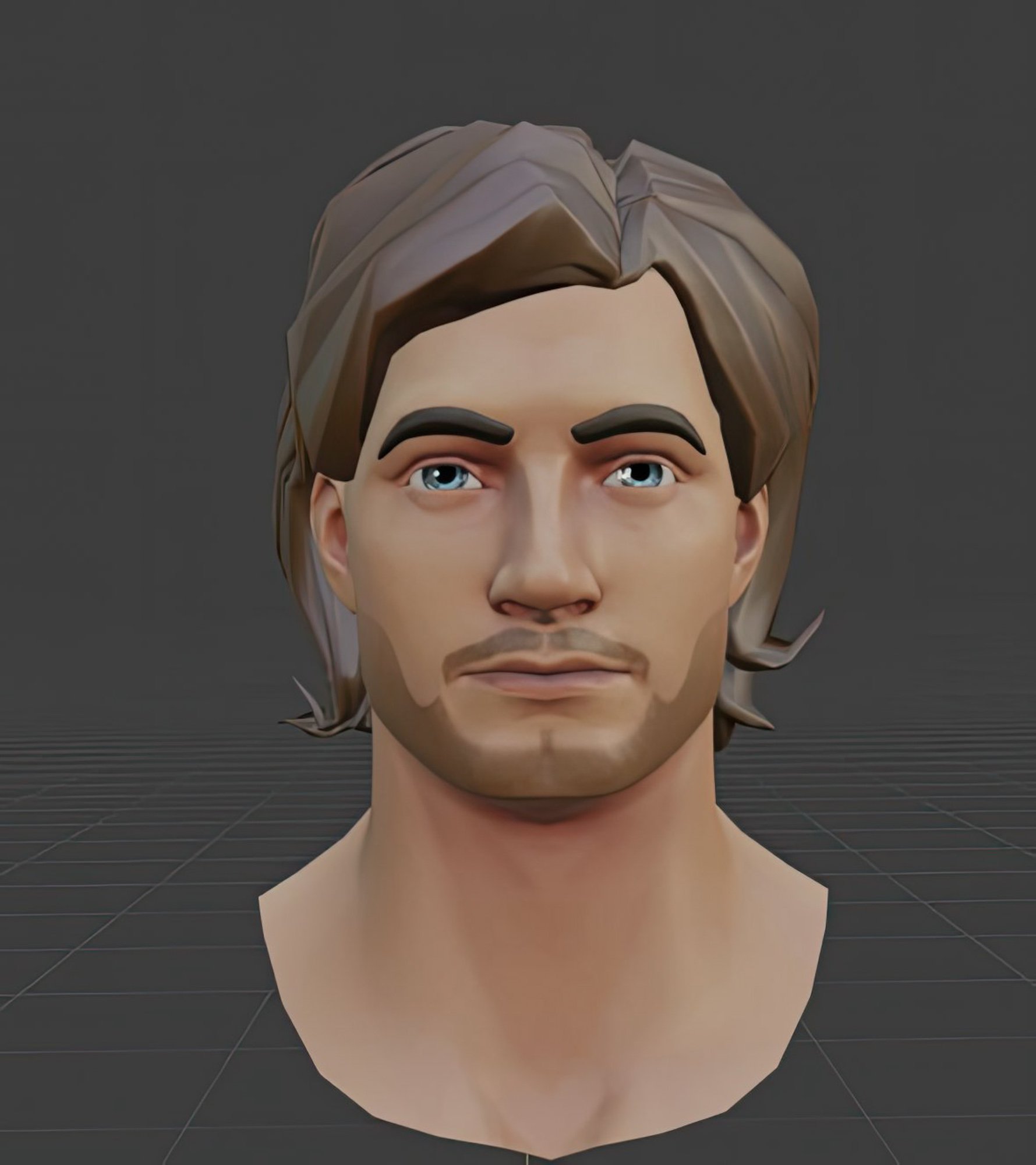

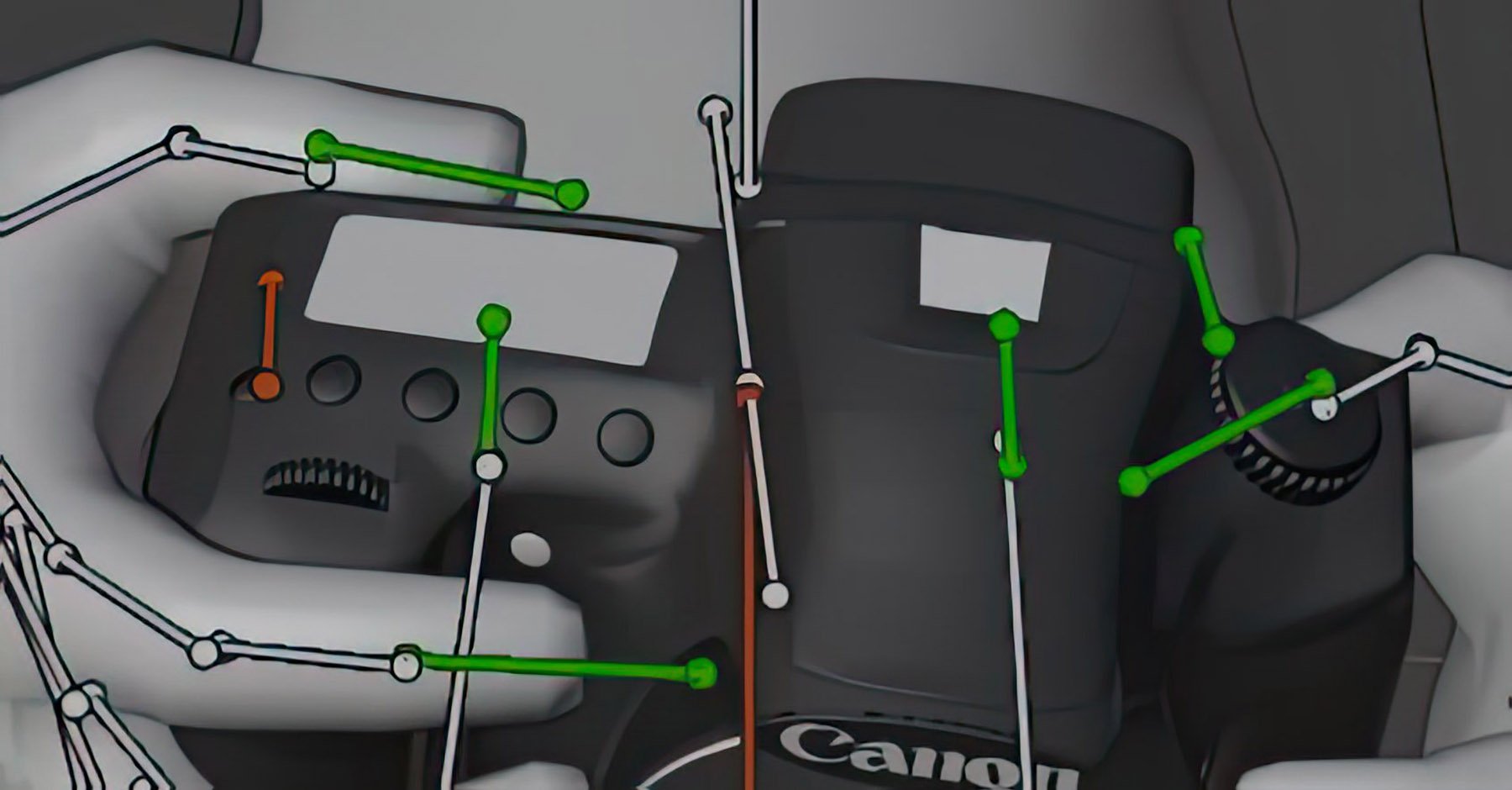



This avatar was my first attempt at a body to enter gaming worlds. Spurred by advertisements I had seen for "Fortnite Avatars" on Fiverr, I commissioned my very first likeness and cameras, unaware of the gaming platform's restrictions on user-generated content. This initial attempt, though based on a misconception, opened my eyes to the varying degrees of self-representation possible across different virtual platforms. After a month of discussions between National Geographic and Fortnite's partnership team, I was forced to accept that only top-tier celebrities like Travis Scott, fresh from his in-game concert, were granted true avatar autonomy. This realization prompted a pivotal decision: to focus my efforts on virtual worlds where I could more directly control and infuse elements of my own appearance and equipment. I carried through with having the avatar rigged for VRChat, where it became my primary form for the LEAP series.





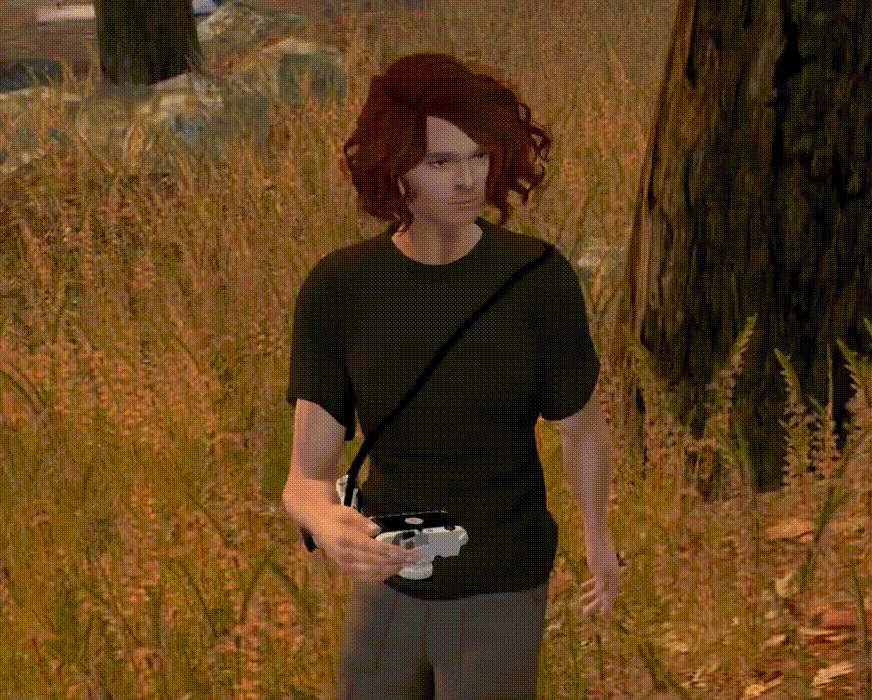

Second Life, a pioneer in virtual worlds since 2003, offered an unexpectedly rich playground for digital photography. My foray into this established digital society began with an attempt at self-replication, outsourcing the task to a Fiverr artist armed with photos of myself. The resulting avatar, somewhat beyond my control, emerged as an amusingly anachronistic version of myself—less a faithful reproduction and more a romance novel cover model reminiscent of my 1994 high school senior portrait. This embodiment came equipped with two prop Leica cameras , meticulously crafted (complete with clicking shutter!) yet non-functional, serving as visual anchors to my photographic intent. The true marvel, however, lay in Second Life's sophisticated in-world camera system—a floating, invisible-to-others glass lens that surpassed my professional physical cameras with its 8k resolution. The ability to manipulate virtual lighting and weather in real-time, coupled with the camera's drone-like maneuverability, pushed the boundaries of traditional photography, challenging notions of physical presence and perspective. This sophisticated system, reflecting nearly two decades of community-driven development, enabled the capture of everything from mundane moments to surreal in-world events like childbirth, ultimately blurring the lines between virtual and physical creative processes.
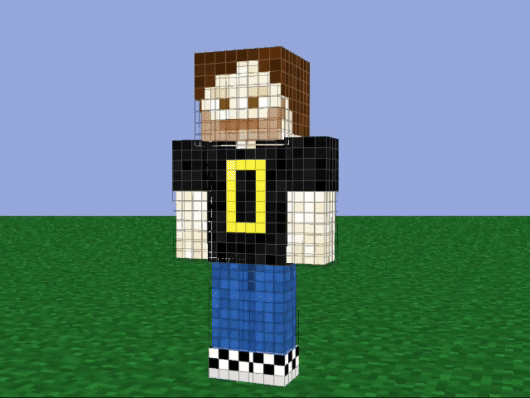




Minecraft, a universe already active within our home for many years, became an unexpected nexus for this project, guided by my favorite collaborator—my 11-year-old son Hawkeye. With his expertise, my digital persona emerged effortlessly: a custom skin featuring a Nat Geo T-shirt and my trusty checkered Vans. Together, we engineered colossal, house-sized cameras and repurposed in-game surveillance systems as virtual camera traps, echoing my real-world wildlife photography experiences in places like Denali National Park. This innovation allowed me to capture unique moments in the game's coded ecosystem, documenting digital fauna in states of algorithmic unselfconsciousness—behaviors typically altered by player presence. As the project evolved, I explored shaders, unlocking intricate water reflections and enhanced environmental complexity, vastly expanding photographic possibilities. The pinnacle, however, was the extraordinary opportunity to photograph the world's generation by its seed algorithm—essentially documenting the birth of a metaverse space. Through this journey, Minecraft revealed itself not merely as my child's game, but as a complex system for artificial life simulation and world-building, offering profound insights into digital existence and creation.
